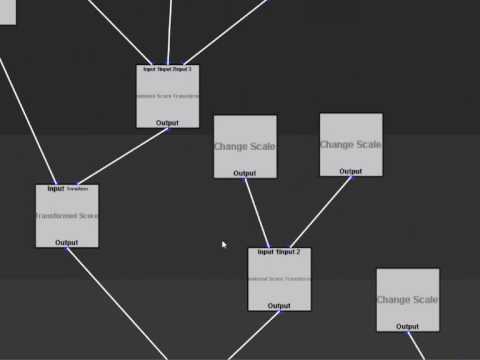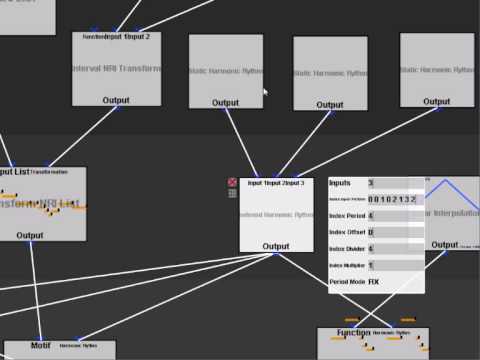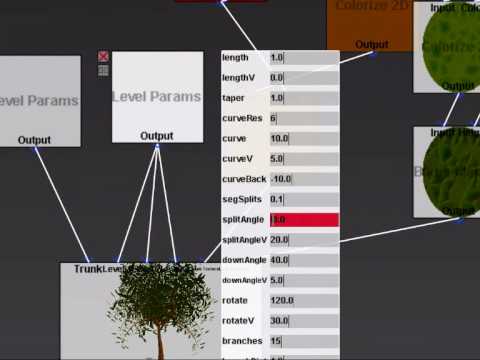… but this one is actually going to be awesome!
Edit: A dated online demo with some presets to play around with:
http://www.springworldgames.com/applets/nodesystem_demo.html
The “manual”:
- Use right mouse key to open the menu. You can select the presets or add nodes.
- Use + and - to zoom in and out
- Click on the nodes to show their attributes
Here are also some lame Youtube video that show a few of its powers:
http://www.youtube.com/watch?v=2AlIfPWM-HQ : Overview of a lot of different features
http://www.youtube.com/watch?v=xZdfpO6uVT4 : Strokes and Light/Bumpmap nodes
http://www.youtube.com/watch?v=RTDs5wNaOrs : Generate “Sprites”
http://www.youtube.com/watch?v=Ac4sV4TlLsY : Procedural Levels and Vehicles WIP and some more
http://www.youtube.com/watch?v=RZpLliBkCdU : Procedural Trees and Particle Systems
http://www.youtube.com/watch?v=fP-1WEkMw94 : Music
http://www.youtube.com/watch?v=B_2sDYVILL8 : Music II (More Variation)
http://www.youtube.com/watch?v=LV21DViKilI : Graphics
It is developed in Java using LWJGL.
When the system is ready (in about hundred years), I plan to include parts of the editor within my future games so that one can modify every sprite/texture, sound, music etc. inside the game. It might also end up as a standalone tool, who knows…
And yes, I have taken a lot of inspiration from Genetica when it comes to the procedural texture stuff 




